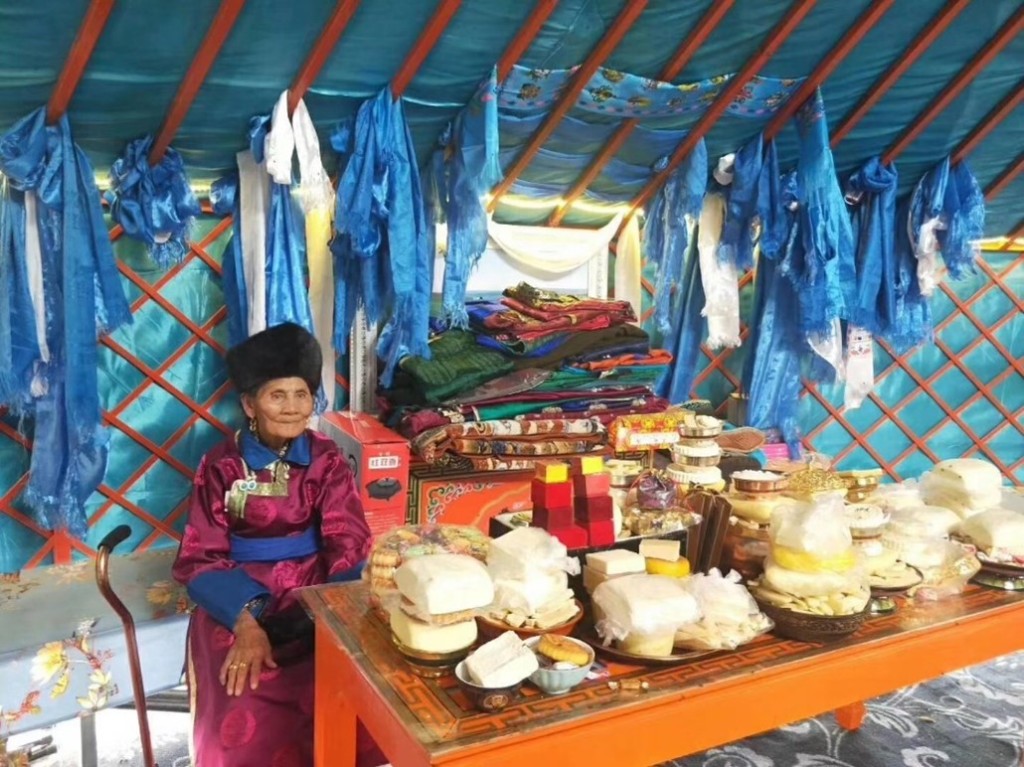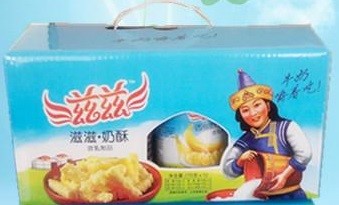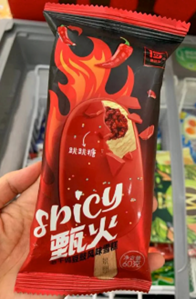
I have posted on dairy a number of times.
- Traditional Chinese Dairy Products introduces products that entered Chinese cuisine from minority cuisines, in particular Mongolian and Western cuisines, especially strong in Guangdong. Traditional Chinese food recreated in milk focuses on the opposite: innovative dairy products inspired by traditional Chinese foods.
- Formulated Milk Beverages points out how inventive Chinese food scientists are creating milk-based products that appeal to even the most traditional Chines palate.
- Protein Drinks shows that plant-based milk alternatives are not a Western invention.
- How Old is Yoghurt and Yoghurt the Centre of Chinese Food Innovation show how yoghurt is a central dairy product in China.
- Cheese in China positions China as the largest growth market for cheese.
- Mengniu the Game Changer tells the story of China’s most noted dairy entrepreneur.
- China’s Butter Market is a rather traditional facts & figures post.
Central product group
Dairy is obviously a central product in the Chinese food industry. In this post, I will introduce the developments in the past 1 – 2 years prior to the date of posting. I will include background information from the above mentioned posts, so you can read this post by itself, without having to click on those links all the time.
Tradition
China is not known as a traditional dairy nation. However, milk and dairy products have been an essential ingredient of the diets of a number of ethnic minorities. These products have been introduced in Chinese cuisine in areas where they mixed with those of Han Chinese. Especially the various dairy products made by Mongolians have been known by the Han in the Northern regions of China. The following pictures shows a Mongolian woman exhibiting a number of dairy products.

Some of the better known products are: milk bean curd (naidoufu), cheese (nailao), milk curds (naigeda) Most of the Mongolian products are solid and sweetened. In this way they keep longer. The cheese, e.g., looks more like toffees in shape, texture and flavour.
A number of companies have developed industrial processes for producing these traditional products. No need to introduce milk tea, as this rage has been exported to several Southeast Asian countries and even to some Western nations with a large number of ethnic Chinese.
Ruiyuan Dairy (Xinjiang) is producing naigeda on an industrial scale. The company has two patents for this new process. Some of the redesigned traditional dairy products have little in common anymore with the original thing. A good example is the industrially produced naisu (‘milk crisps’) by Duoweier Bioengineering (Chifeng, Inner Mongolia). The ingredients list is quite impressive, but has nothing to do with the traditional product:
whole milk powder, starch, crystal sugar, vegetable fat, glucose syrup, vegetable oil, additives [emulsifiers (sodium caseinate, glycerol fatty acid ester), stabilizer (sodium biphosphate), silicon dioxide], dextrin, whey powder, water, glucose powder, maltose, cream, lactic acid, citric acid, food flavour.

The effect of the long ingredients list is softened by the Mongolian symbols on the packaging: a girl in traditional attire pouring milk and the yurts in the background.
History
The development of the modern Chinese dairy industry can be roughly divided in three stages:
- 1949-1998; a period of gradual growth;
- 1999-2008; period of rapid growth. Since 1999, the development of China’s dairy industry has entered the “golden decade”, and the demand for dairy products increased rapidly. That of the liquid milk market grew with an average of 60% per year. However, the weak spot in the value chain was milk collection between dairy farms and the dairy processers. This led to the famous ‘melamine incident’ in 2008.
- 2009-present; It took a major effort for the domestic dairy industry to regain the confidence of Chinese consumers, but it succeeded a few years ago and the industry is growing reasonably well.
Current situation
Although the dairy stock is showing a continuous decline, it does not affect the milk production, because the milk per cow is increasing. China’s raw milk production reached 39.32 mln tons in 2022, a year-on-year increase of 6.77%.
Also in 2022, the per capita dairy consumption of Chinese consumers increased to 24.36 kg/ person/year, a year-on-year increase of 0.74% compared with 2021. The volume of 2015 was 21.41 kg/person/year.
Dairy is regarded as a major source of nutrition by the Chinese government. It is therefore strongly promoted. Chinese consumers also perceive milk and dairy products as a major source of nutrition, in particular for young children. Dairy is placed in the second tier in the current Chinese nutrition tree (pagoda in Chinese).
According to data from the National Bureau of Statistics, The total volume of dairy products in 2022 was 31.177 mln mt, up 2.84%. Liquid milk accounted for 93.79% of this volume. It was followed by milk powder, accounting for 3.23%. Half of the latter was infant formula; the other half consisting of a wide range of powders for various consumer segments. The remaining 2.98% consists of various products, like: yoghurt, butter, cheese, condensed milk, cream, ice cream, etc.
A2 milk
The Chinese market for A2 milk is growing rapidly. At a time when the birth rate is declining, A2 Milk Company reportedly does very well with double-digit growth in revenue and profit. The company’s financial report for the first half of 2023 shows that early infant milk powder sales reached NZ$ 270.7 mln, an increase of 43.5% year-on-year. Liquid milk sales in China and other Asian regions also increased by 34.6% to NZ$ 7.5 mln. Revenue from other nutritional products also increased by 83.7% to NZ$ 17.8 mln.
Culturally, Chinese are susceptible for ‘rare healthy products’. Chinese influencers are generally positive about A2 milk powder. Discussions among specialists show more varied opinions. Many experts doubt whether A2 milk is really worth the premium price.
Other milk sources
Milk comes from cows. This is so well known that the standard Chinese word for ‘milk’ is niunai ‘cow milk’. Milk from other sources is also available. Of these, goat milk is large enough to influence the total milk supply. Other sources have sprung up in recent years, which come in small quantities and have a more fancy image.
Goat milk has the image of being slightly easier to digest that cow milk. It has been around for longer in China. The main production regions, Shandong, Shaanxi and Yunnan do not form a geographic cluster. It is more a matter of local tradition than climate or geological conditions. The value of goat milk market in 2020 was RMB 10.4 billion; up 3.9% compared to 2019. Approximately 30% of the goat milk powder consumed in 2020 was imported.
Camel milk is on the rise in China, but quantities are small. China produced 18,200 mt of camel milk in 2021, a little more than in the previous year. In 2020, 11.7% was used for producing ice cream, 20.7% for camel milk powder, 8.6% for fermented products, 4.2% for others and the remaining was consumed as liquid milk.
South China produces small quantities of water buffalo milk and Inner Mongolia small quantities of horse milk.
Plant based milk
This is a big product category in China. in 2022, 22.4% of the Chinese population suffered from lactose intolerance. Vegetable protein drinks are regarded as a good alternative. The total turnover 2021 was RMB 123.4 bln, 10.47% higher than the previous year.
The nomenclature has changed with the coming and going of fashions. Protein drinks (danbai yinliao) was the first name and is still widely used. With the growing influence from the Western vogue for milk alternatives, the term nai (milk) was introduced and gained some hold. This change of term made it easier to let these products (or better, their producers) cash in on the healthy image of milk and dairy.
China’s top dairy companies have adopted an ‘if you can’t beat them’ strategy. Mengniu and Yili, the top 2, have launched their own protein beverages recently. Yili announced its plans during a public meeting at the end of 2014. Mengniu has entered into a joint venture with US-based WhiteWave Foods Company, a leading consumer packaged food and beverage company in North America and Europe early 2013. The JV is marketing WhiteWave’s Silk brand protein drinks in China. This product is common in the US and is an affiliate of Alpro, a brand in Europe, though its positioning in China is quite unique. With its convergence of flavours, Silk’s positioning as a 100% natural solution, targeting those that are lactose intolerant, could spell success for Silk in China, especially as consumers become ever more sceptical regarding the origin, nutrition, safety and environmental impact of the food and beverages they buy.
Cheese
Cheese consumption is increasing at an incredible speed during the past few years, considering that not so long ago, almost all Chinese were abhorred about the smell of cheese. Cheese supply volume in China has surged from 140,000 mt to 270,000 mt during the period 2017-2022. This figure is expected to maintain double-digit growth, far above the world average for the coming years.
Although the average cheese consumption in China is far below many Western countries as well as Japan and Korea, it has significantly increased from 80g/person/year in 2017 to 130g/person/year in 2021. At the 2022 China Cheese Development Summit Forum, the Dairy Association of China released an action plan, proposing that the national cheese production would reach 500,000 mt by 2025. Much of the cheese sold in China is processed, but non-processed is increasing.
An interesting development is that Chinese cheese producers are focusing on developing one-bite cheese snacks, for all ages, but in particular for children. This is partly a result of the pressure of the Chinese authorities to increase dairy consumption among children. Such products include cheese sticks, cheese slices, cheese strips, etc. Cheese stick is the most popular one, which was first launched by Milkana, but was popularized by Milkground. Presently, promoted by the increasingly intensive market competition, dairy enterprises have rolled out a wide range of cheese sticks with distinctive features. Apart from various funny shapes, including ‘cheese lollies’, they are also experimenting with flavours. Here is an ad of Milkana strawberry flavoured cheese sticks.
A new cheese stick brand, Cheespirit, launched a series of innovative products on May 28, 2023: ‘Vegetable & Fruit Growing Up Cheese Sticks’. The company claims to have selected 8 kinds of ‘super vegetables and fruits’ to create high-calcium and high-VC cheese sticks, containing 3% dietary fiber. The calcium is 100% milk calcium, with a 1.8:1 calcium-phosphorus ratio. The product contains 40% whey protein, as well as algal oil DHA and various trace elements derived from vegetables and fruits, providing nutrients such as protein, dietary fibre, vitamins and other basic nutrients needed by children. It contains no preservatives. It uses two innovative two-colour-flavours: Lele orange (tomato, carrot and apple compound flavour) that contains β-carotene; and absolute purple (purple sweet potato, purple cabbage blueberry complex flavour) containing anthocyanins to help the children’s growth.
Yoghurt
Yoghurt in the broadest sense of the word (soured milk; suannai in Chinese) is the only dairy product consumed regularly by Chinese city dwellers around the founding of the PRC. As the bacteria consume most or all of the lactose, people with a lactose intolerance can eat yoghurt safely. Yoghurt was available in Beijing in clay pots with a paper lid. Milk and a culture were added to the pots, which were then kept to ferment until the yoghurt, a liquid with curds, was ready for consumption.
Modern yoghurt production set off during the 1980s and the development of new products has never really stopped. Especially during the past decade, yoghurt has become a pet product of the Chinese dairy industry, a field in which the R&D departments could realize their wildest dreams in textures, flavours and packaging designs. One could even state that yoghurt has become a kind of fashionable product. Fads come and go and many products seem to have a very limited life span. Still, the developments in this sector contain interesting points to take away.
The nationalist trend
The renewed interest in traditional culture in China (the nationalist trend [guochao) is also reflected in the celebration of traditional holidays, like the Mid-Autumn Festival. Although dairy is regarded as a foreign food group, yoghurts have been launched in connection with traditional holidays. Yili has issued a limited edition of its Ambrosial yoghurt for the Mid-Autumn Festival.
Even Beijing’s pastry maker Daoxiangcun, that is not a dairy company, has launched a one-time Dragon Boat Festival yoghurt flavoured with mooncake, the traditional pastry eaten during that festival and of which Daoxiangcun is a main supplier.
Yoghurt and milk tea
Milk tea is a vogue that reached Mainland China from Taiwan and quickly became bigger than in its home market. Young Chinese are willing to line up for hours to get a cup of their favorite milk tea. The latest stage in this fad is milk tea based coffee, i.e. coffee with all kinds of ingredients you can add to milk tea. It has even added a new word to Chinese vocabulary: milk-tea-ization (naichahua). This term is also used for various fads in the Chinese coffee scene. Soft drink maker Genki Forrest has cashed in that by launching a milk tea inspired yoghurt.
Black yoghurt
Launching black versions of existing food products is another trend in China. Black food is traditionally linked to health. Moreover, there is a small but stable group of young people interested in gothic music, including the black outfit that come with it. A number of black yoghurts have been launched during the 2020s. E.g., there is Yiming’s yoghurt coloured with inkfish ink and black sesame seeds.
New raw materials
The plant-based trend has not only reached China as well, it is booming there. There is a plant-based meat tradition in China developed by Buddhist monasteries. Buddhist monks and nuns were not allowed to eat meat, but like their European counterparts, did not want to disregard their craving for the texture and flavour of meat and fish. They developed a broad range of imitations that are still served in traditional vegetarian restaurants and restaurants operated by monasteries.
Solid yoghurt
A recent development is the launch of cubed frozen yoghurt by Yili. Yili claims that it is using a special dry freezing process developed by the space industry that retains the 100 mln lactobacillus bacteria in each cube. The probiotic used is patented by Yili.
Yoghurt candy
The step from solid yoghurt to yoghurt candy is a small one. Xinlüjia (Shantou, Fujian) produces a yoghurt candy called Old Yoghurt (Laosuannai). An interesting aspect (sales trick) is that you can heat the product first in your hand, then open it, and pull it into long shreds. That may not appeal to all people, but the manufacturer apparently believes it will attract younger consumers.

Ice cream
The developments in the Chinese ice cream market have been so rapid during the past few years, that they have been hard to follow. In this post, I will focus on a specific innovative category: savoury ice cream. Until recently, ice cream was typically a sweet to very sweet treat. Now, the most peculiar flavoured ice creams are appearing all over the country. I have selected a few representative products.

Shred meat (rousong) is a Chinese meat-based snack produced by slowly roasting meat for a long time until it is very tender, but still dry, unlike stewed meat, and then shredded. It is usually not consumed on its own, but is used as an ingredient in various foods. Here it is combined with chopped spring onions (the English says chives, but the Chinese, which I take as the original, says onions). It can work. Shred meat is traditionally used to flavour sweet-savoury pastries.
Hot and spicy

A chili flavoured variety was to be expected, so here it is. Spicy food used to be restricted to a few regions in China, but chili has become a vogue in almost the entire country. The packaging promises a lot of fire. I like chili chocolate (the mild type), so I expect to like this too.
More innovative dairy products will be developed in China in the near future. Keep an eye on this post and do not hesitate to contact me for tailor made market reports.
Peter Peverelli is active in and with China since 1975 and regularly travels to the remotest corners of that vast nation. He is a co-author of a major book introducing the cultural drivers behind China’s economic success. Peter has been involved with the Chinese food and beverage industries since 1985.
You can now read the most important #news on #eDairyNews #Whatsapp channels!!!
🇺🇸 eDairy News INGLÊS: https://whatsapp.com/channel/0029VaKsjzGDTkJyIN6hcP1K

























